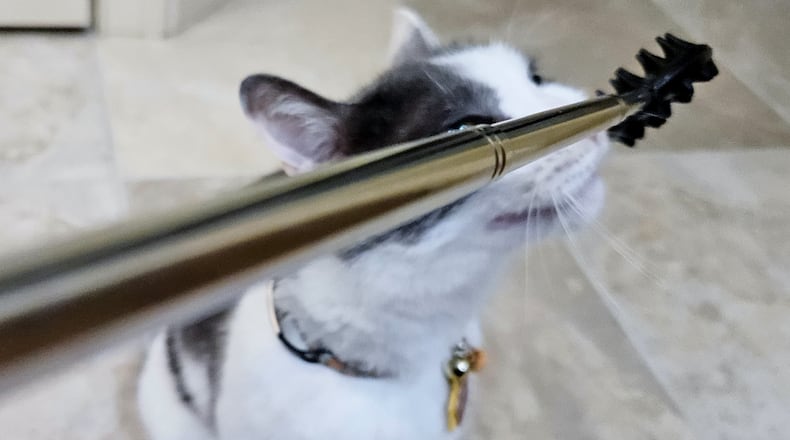He’s mad at me.
Jane Baugher at lovecats.org describes five of the most common reasons cats get upset with “their” humans. She describes the first as “not enough playtime.”
“Cats need regular exercise and stimulation to stay healthy,” she writes, “so they can become frustrated or angry if they don’t get it from you.”
When it comes to Pip, she’s spot on. I haven’t spent nearly as much time playing with him as I have in the past.
There’s a good reason but try explaining that to a cat.
Last spring, I started feeling intense pain in my left shoulder, especially when pressure was applied. X-rays showed I no longer had any cartilage in that shoulder.
As a paraplegic, I’ve always had pain and sore muscles. I use my shoulders, arms, basically my upper body, as my lower body. Tasks I never thought about but did daily – pushing my wheelchair, pulling it in and out of my car and the like – were putting additional stress on my shoulders, particularly the left.
This was different. For me, the consequences of no longer having cartilage in my left shoulder were intense pain and limited movement. For Pip, it meant less play time.
Pip’s favorite toys are wands. The cat loves to chase after the lure, jumping high in the air and bringing it down to the floor. Pip wrestles with it for a few minutes, gets up, stretches, and then positions himself to do it all over again.
He will play this game at 15-minute intervals. We would usually play at least twice a day. But as my shoulder pain increased the games stopped.
The only way to resolve this was to get back to playing with Pip. Baugher explained, “Cats can stay mad at you for a long time, depending on the situation. Minor issues such as not providing enough playtime may only result in short‑term resentment.”
Resuming our play times wasn’t as easy as just doing it. I had to learn to deal with the pain and re-engage his royal highness. Now I’m playing with him at least once a day.
At first, if the feline isn’t interested, I get my back scratcher and gently massage him with the extendable round head. Pip loves it.
I rub Pip all over. He will stretch so I don’t miss a spot, including rolling over so I can reach his tummy. For his ears and chin, I hold the scratcher up and he does the work, rubbing his head up and down over the spikes.
After a massage, we go back to the wand and, usually, Pip is much more engaged in playing with me.
Pip and I have been doing this for about two weeks. He isn’t back to sleeping with me, but as I write this the feline is curled up in my lap.
Karin Spicer is a member of The Dog Writers Association of America. She lives with her family and two furry animals who inspire her. She can be reached at spicerkarin@gmail.com.
How cats can show their anger:
1. Hissing and growling
2. Refusing to eat or drink
3. Avoiding contact with people they don’t like
4. Swatting objects off shelves or tables
5. Staring intently in an aggressive manner
About the Author

